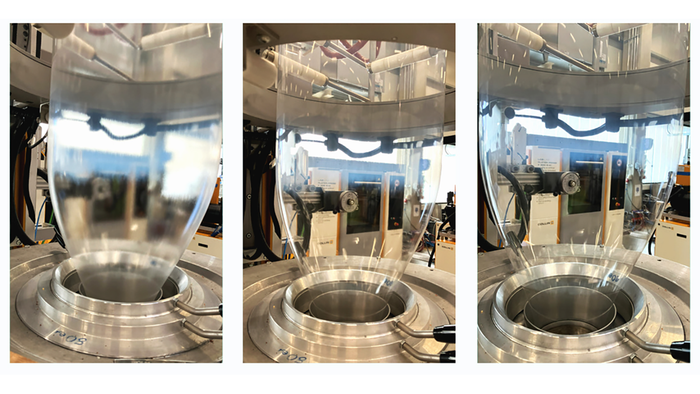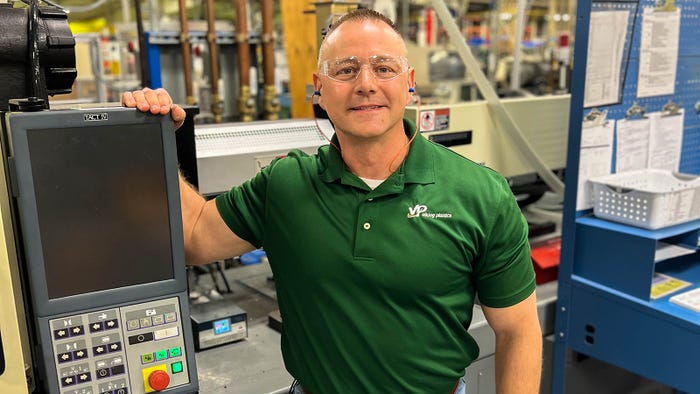
GW Plastics purchases Avenue Mould Solutions - precision moulding and moulds
Author:gly Date: 2024-09-30
Victrex and Safran Cabin utilized an innovative technique where Victrex AE 250 thermoplastic composite is overmolded with Victrex PEEK high performance polymer. This hybrid overmolding technique is a scalable, repeatable technology with potential to help commercial aerospace customers face the challenges of needing much lower scrap rates, faster cycle times, part consolidation, and reduction in the number of secondary operations. Stringent testing and qualification work have indicated that structural aircraft parts produced from Victrex AE 250 via hybrid overmolding can withstand high levels of mechanical stress.
As the automotive industry moves from traditional ICE vehicles to BEVs, OEMs and part manufacturers are re-imagining the types of materials that can meet the new thermal management needs. Polyplastics believes that less-heat-resistant plastics like POM and PP have significant potential in the manufacture of EV cooling components.
"At Victrex we are proud of our track record in introducing 'disruptive' technological approaches in the sectors that we serve, using our know-how in the processing and performance of PAEK materials to accelerate the commercialization process," commented Tim Herr, Director, Aerospace at Victrex. "Hybrid overmolding and Victrex AE 250 composites are certainly within this category but this is just the beginning. We continue to test our composites offering, with support from our customers and partners in order to demonstrate the full potential of these materials.”
The Polyplastics Group, a global supplier of engineering thermoplastics, has introduced an approach for using less heat-resistant plastics for battery electric vehicle (BEV) cooling components. Polyplastics sees strong potential for plastics such as polyacetal (POM) and polypropylene (PP) for the production of EV cooling components.

BEVs do not have engines as heat sources and, therefore, require an LLC temperature of 100°C or lower to cool the battery. This allows for the use of less heat-resistant materials for BEV-specific components.
Following the initial design phase, mold-filling and structural simulation methods were combined with various physical testing techniques to identify and mitigate new technology failure modes and to streamline injection molding manufacturing and cost constraints. Critical characterizations were refined, and a productive, repeatable design process has been developed.
Safran Cabin, a leading supplier of cabin interiors, and materials supplier Victrex have worked together to qualify thermoplastic composite parts on aircraft. A flexible platform is being designed to cut planning and time-to-market of multiple brackets, with the first being a hybrid overmolded aircraft cabin bracket made of Victrex AE 250 carbon fiber PAEK composite and Victrex PEEK polymer. Victrex, provided the material, process and tooling expertise required to realize versatile design features while meeting key performance parameters. Safran Cabin provided critical expertise in design and manufacturing to ensure applicability in aerospace service and certification environments.
Stephen has been with PlasticsToday and its preceding publications Modern Plastics and Injection Molding since 1992, throughout this time based in the Asia Pacific region, including stints in Japan, Australia, and his current location Singapore. His current beat focuses on automotive. Stephen is an avid folding bicycle rider, often taking his bike on overseas business trips, and is a proud dachshund owner.
When the temperature of an LLC is 100°C or lower, general-purpose engineering plastics like POM or PP can be used instead of metals or high-performance engineering plastics. In the case of PP, Polyplastics sees potential for PP-LGF (long glass fiber) instead of short glass fiber to increase strength, dimensional accuracy, and overall performance. It also offers Duracon bG-POM made with biomass as an eco-friendly option.
Efficiency is taking off: Standardized parts, reduced weight, streamlined manufacturing, and potential installation savings on the horizon.


With Safran Cabin, the design process focused on defining parts and molds adaptable for multiple brackets, with the goal of achieving a family of designs compatible with the same mold. This involved establishing a cost and weight advantage while considering the flexibility of the platform to be used in various applications.
Japan’s Polyplastics says POM and PP can replace the likes of higher-cost PPS, which is typically used to channel coolant in internal combustion engines.
Internal combustion engine (ICE) automobiles use a long-life coolant (LLC) that is primarily made of ethylene glycol. The coolant in engines is typically maintained at a temperature of 70° to 100°C but can rise to 120°C or higher if the engine overheats. Therefore, metals or high-heat-resistant plastics like polyphenylene sulfide (PPS) are used in the cooling components and lines.
Stephen has been with PlasticsToday and its preceding publications Modern Plastics and Injection Molding since 1992, throughout this time based in the Asia Pacific region, including stints in Japan, Australia, and his current location Singapore. His current beat focuses on automotive. Stephen is an avid folding bicycle rider, often taking his bike on overseas business trips, and is a proud dachshund owner.
"We need to respond to many demands for aircraft brackets and similar structural parts, with each case having many loading, constraint, and exposure conditions," said Tyler Smithson, R&T Engineer at Safran Cabin. "The key to success is to develop a flexible composite platform that can be used for multiple projects, lowering our part count and design complexity, cutting time-to-market, speeding time-to-revenue."
Replacing highly heat-resistant plastics such as PPS with POM and PP not only reduces material costs but also helps reduce the carbon footprint of materials and energy consumption during molding.
Hybrid overmolded aircraft cabin bracket is made of Victrex AE 250 carbon fiber PAEK composite and Victrex PEEK polymer.
The initial prototype brackets were produced at Tri-Mack Plastics Manufacturing Corporation. Compared to the original aluminum part, the prototype composites contribute to a 20% cost saving; 50% weight reduction; and a 5x better buy-to-fly ratio. The buy-to-fly ratio is the weight ratio between the raw material used for a component and the weight of the component itself.
GETTING A QUOTE WITH LK-MOULD IS FREE AND SIMPLE.
FIND MORE OF OUR SERVICES:


Plastic Molding

Rapid Prototyping

Pressure Die Casting

Parts Assembly



